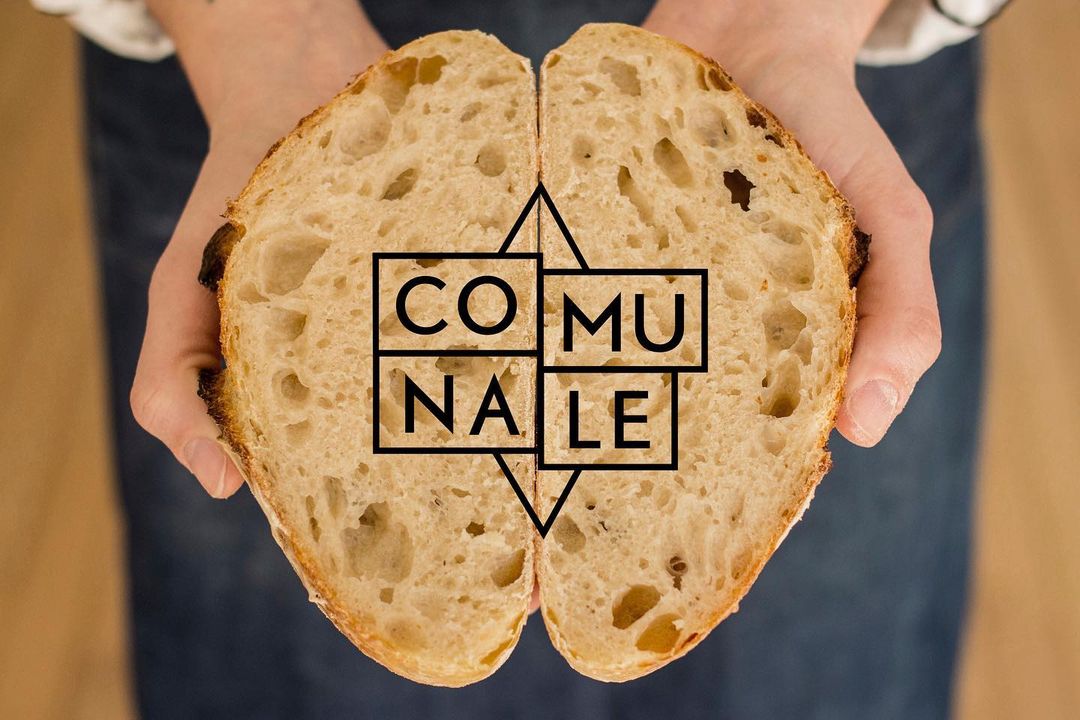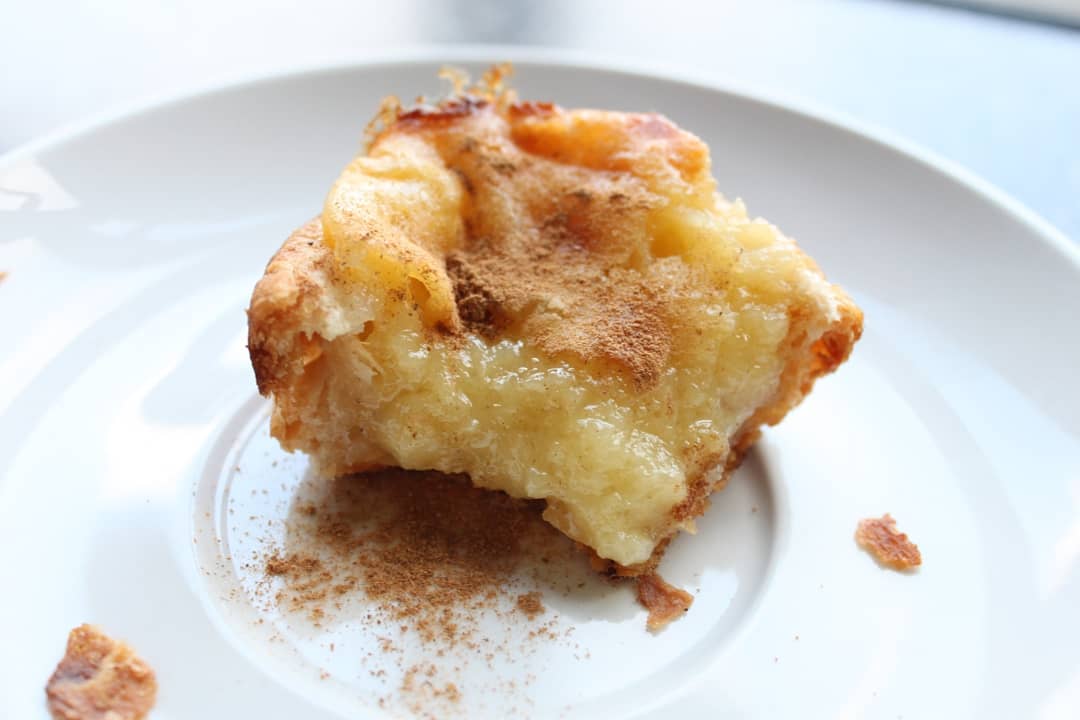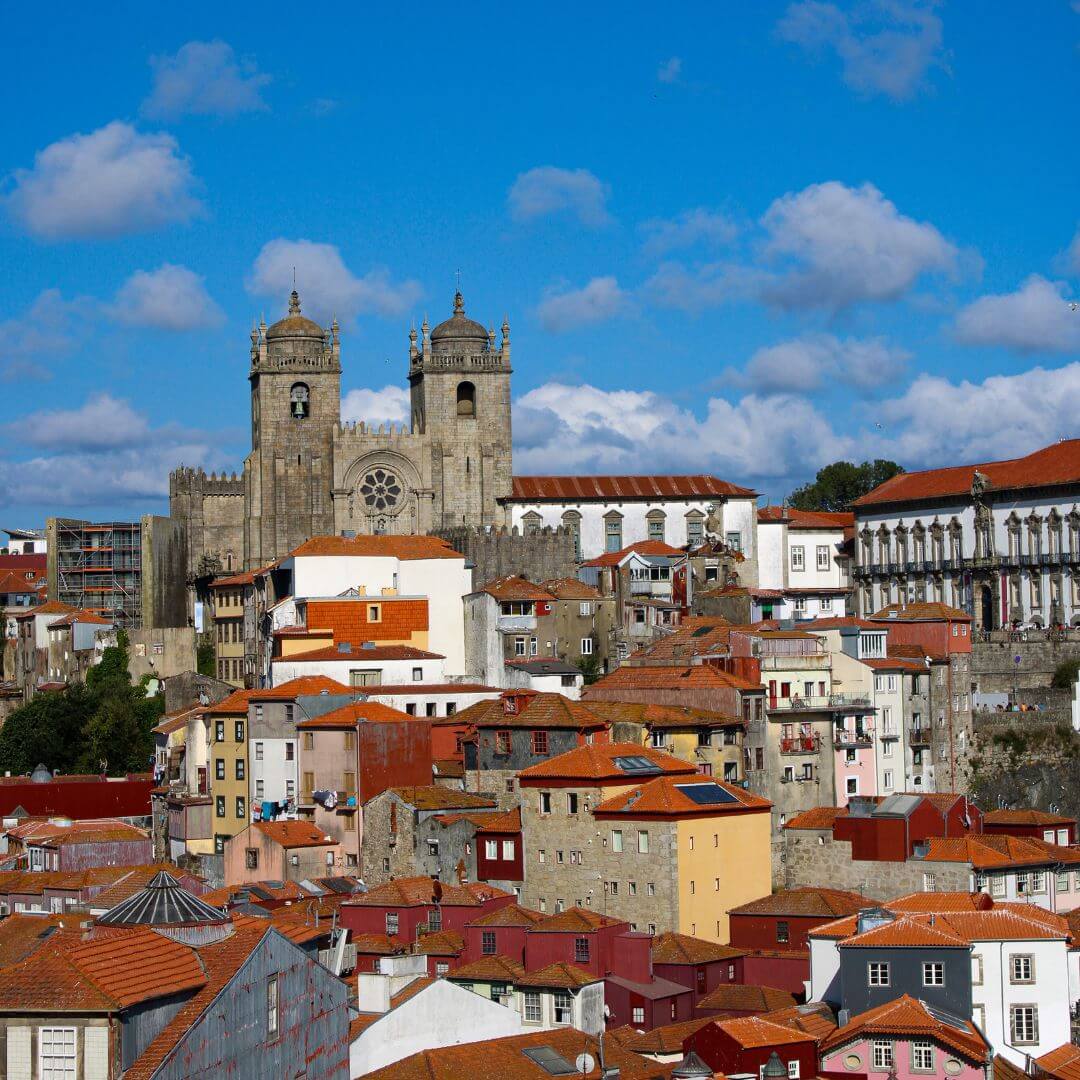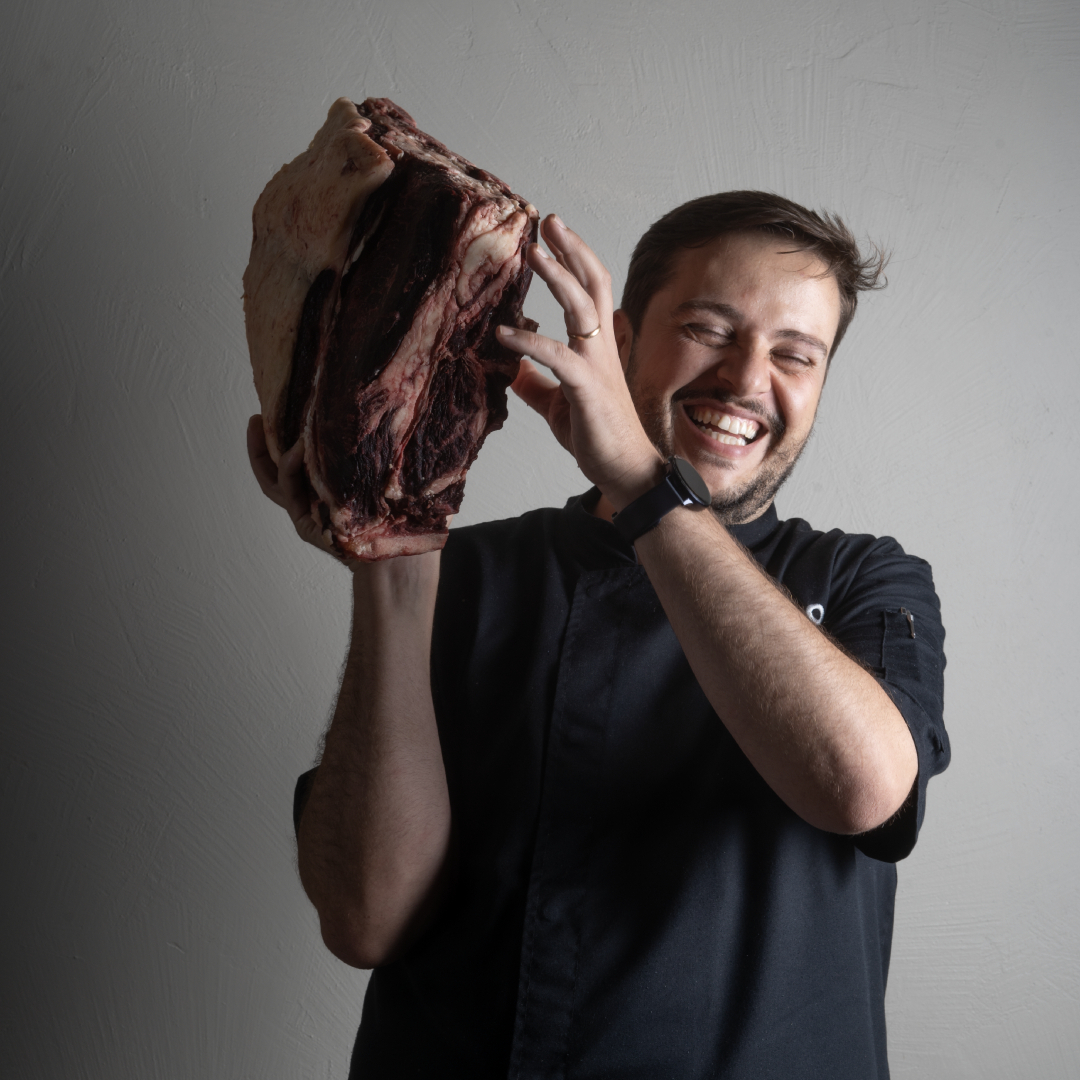
One Chef at a time – Meet Pedro Braga, Chef at Mito
This interview was conducted online during the pandemic, providing insights into the restaurant’s situation at that particular time. From COVID-19 to the concept of Fine Dining and the changing of his original Menu to fit the needs of the clients in a tumultuous 2020, Chef Pedro Braga reveals his thoughts and feelings about food. Continue scrolling to read the original interview below (in Portuguese).
Pedro Lemos, Clérigos, Reitoria, Tenra and then Mito, your first signature restaurant. Why did you choose to pursue a culinary career?
Cooking has always been a part of my life. Since I was a little boy, I used to help around the house and I loved helping my mother in the kitchen. Later on, I used to be the one cooking for my friends’ dinner parties. Around the age of 16, I started working on my uncle’s restaurant and I found the joy of connecting with customers. I continued to get back to that work, on weekends mostly, to earn some extra money and ended up applying to the Hotel Management course afterward.
The culinary career comes after the internships I’ve been doing during the Hotel Management course. During that time, I understood that the energy that I felt in the kitchen got me all energized and motivated. I considered myself a bit lazy until that moment. After that, I decided to stop what I was doing and start working with a Chef of my acquaintance in his restaurants, making a living from cooking and shopping for events. After two years in that kitchen, I decided that this was what I wanted to do and I flew to London where I took the Cooking and Pastry Course at Le Cordon Bleu.
London is a captivating city from a culinary point of view and I took the opportunity to visit some restaurants as a customer and applied to do a 1/2 day trial in the kitchens of those same restaurants to see what it was like from the inside. When I completed the Cooking and Pastry Course, I decided to stay in London and work with Chef Pierre Koffmann in his homonymous restaurant. In the meantime, I had returned to Portugal and took this path that you already know.

Some define your cuisine as “fine dining without being a luxurious restaurant”. But we know that fine dining just isn’t what it used to be. In your opinion, what makes a Fine Dining Restaurant?
In my opinion, Fine Dining is not just about food or luxuries. Fine Dining requires rigor, technique and consistency in the kitchen and in the living room. But it is quite a broad concept: it can be luxurious or more casual, none of these aspects shock me.
At my restaurant, Mito, I wanted a lighter approach. We make the broths as we did at Pedro Lemos or in London. And although I like to go to Fine Dining, I wanted a more relaxed attitude towards the clients. At Mito, the service is more relaxed but I always insist on being “customer-driven” – the attitude, however, is closer to the customer. The same applies to the kitchen: sometimes a dish doesn’t look the same, but, as long as it was made how I want it to be made and the quality of products is ensured, I worry not.
At Mito, dishes are divided into “warm” and “chilled, “coal” and “sweets”. How did you come up with this idea for the Menu?
Initially, the Menu was meant to be crossing the line and combining sweet and salty, without a division. I think this Menu can be really fun, especially in a sharing meal – though it is not my original idea. But as I wanted to highlight the “coal” in dishes that were not just “grilled”, I thought it would be funny to make this division. The names themselves are literally the division of the kitchen sections.
Changes to menus are among the most visible ways eateries are adapting to the pandemic. How did Mito adapt its wonderful menu to these challenging times?
After the first lockdown, I decided that Mito would become an Uber Eats Restaurant Partner. From June to November it was easy to understand that this was not the target restaurant for this type of sale. In fact, I also order takeaway and I came to the conclusion that I wouldn’t order something from my own Menu too often. I could occasionally order it, but I wouldn’t order all dishes.
At the end of October and beginning of November, the number of customers started falling again. And Uber wasn’t selling anymore. When the Government imposed a ban on traffic on weekends, I understood that I had to react – I could not go home again. April was most certainly the most difficult month to be inside my head! I really didn’t want to be dragged into the same situation again. My reaction was to literally pause the Mito project and move on to a product that I would order at home easily, a product that would be quicker to replenish day after day and that would allow us to be faster and spend less money to fill refrigerators. And at a lower selling price because we knew that we are not the only ones having a bad time. This is how the #pausemitoplayburger project came to life.
We turned into a burger house on the 12th of November. But as we wanted to maintain the Mito identity, we extended the concept a little bit. Meaning, we don’t only have cow burgers, we have a fried chicken burger, a chopped salmon burger, and, obviously, a vegetarian burger. To make sure it has our signature, the bread is made by us. We kept two iconic starters from our original menu (beef croquettes with chorizo mayo and the Berlin balls of ham Pata Negra and bacon) as well as Sticky Toffee Pudding for dessert. We did it to keep some classic elements of Mito in these new dishes and because they also fit into this more fast-food type of meal.
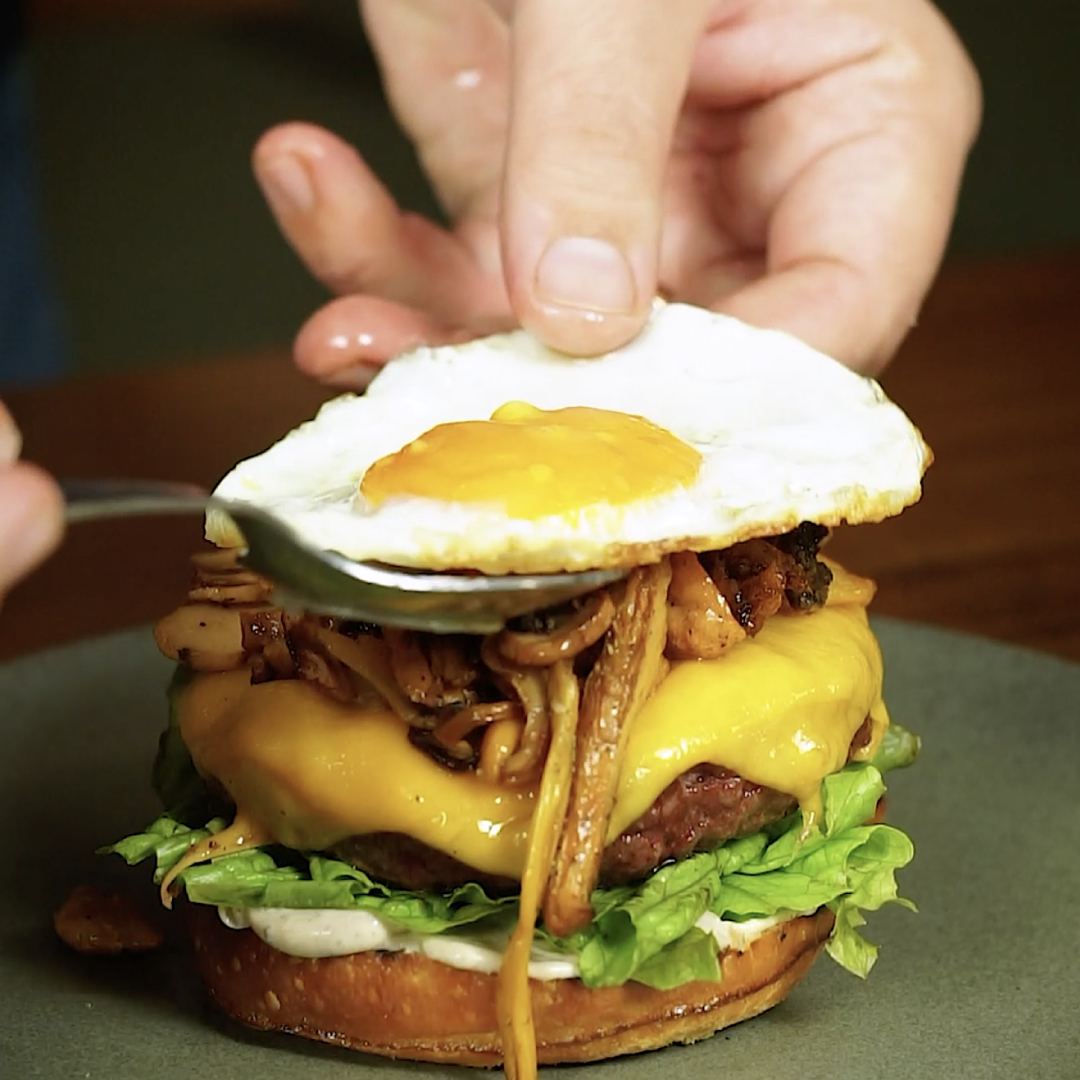
In a sector as competitive as the restaurant industry, what are the secrets to ensure customer loyalty?
Proximity, close contact and commitment. We have many customers with whom we maintain close contact. We know the table they like to sit at, what they prefer to drink or what they might want to eat. This is challenging and requires proactivity. Creating a welcoming culture and making every guest feel welcomed… is one of our biggest goals ever. We already added drinks to the menu because of a client recommendation and on the next visit to Mito we surprised him with that. This is part of what makes this contact so much fun. But, of course, this takes time. Loyalty begins with a smile. It seems cliché, but it is not! Smile and availability to welcome you.
If you never became a chef, in what other ways would you use your creativity?
I have been working in the hotel industry for many years, so I don’t know if I can answer this question. But as long as there is contact with a client, count me in! If I had to be sitting all day behind a secretary, there would be no creativity, that’s for sure!
I am also very happy every time I have to set up events in places that are not for events, even if I don’t cook, does that count?
It sure does! Is there a chef you admire the most?
It is also very hard to answer that question because there is way more than one chef! But I always like to answer: Pierre Koffmann. It gave me great pleasure to work in his kitchen. Being ignored for a while and then being alone in the kitchen in the afternoon with him making terrines, puff pastry, brioches, baba’s… it was incredible, and he is an icon in English cuisine.
In our country, there are names that will change the future of our cuisine, Vasco Coelho dos Santos, Aurora Goy and Nuno Castro. I’m trying not to say too many names and mention Porto chefs mostly. Otherwise, this list could go on forever.
When are you happiest at work?
Full room, smiles, glasses toasting, watching customers take bites and their eyes shining while everybody in the room is shaking their heads to the soundtrack that my wife prepared for Mito.
Arriving at the end of the night with my tired but smiley team and have a drink. But this may be related to the fact that I really miss those times before Covid (laughs).
Let’s play a quick Q&A round, shall we?
- Easiest Portuguese meal to impress someone?
Portuguese duck rice. - The one ingredient you can’t live without?
Butter? - The most exotic/strange thing ever eaten?
I don’t know if it is exotic but it is definitely the strange thing that I have ever eaten: I’m talking about a cow’s lung that is dry and fried in the Padang region of Indonesia. - Coffee or tea?
Coffee. - Wine or beer?
Wine but I never say no to beer. - What locale has surprised you the most?
Vietnam! The freshness of the products, the exuberance of the herbs… I was very happy there!
PORTUGUÊS: You can read the original interview below.
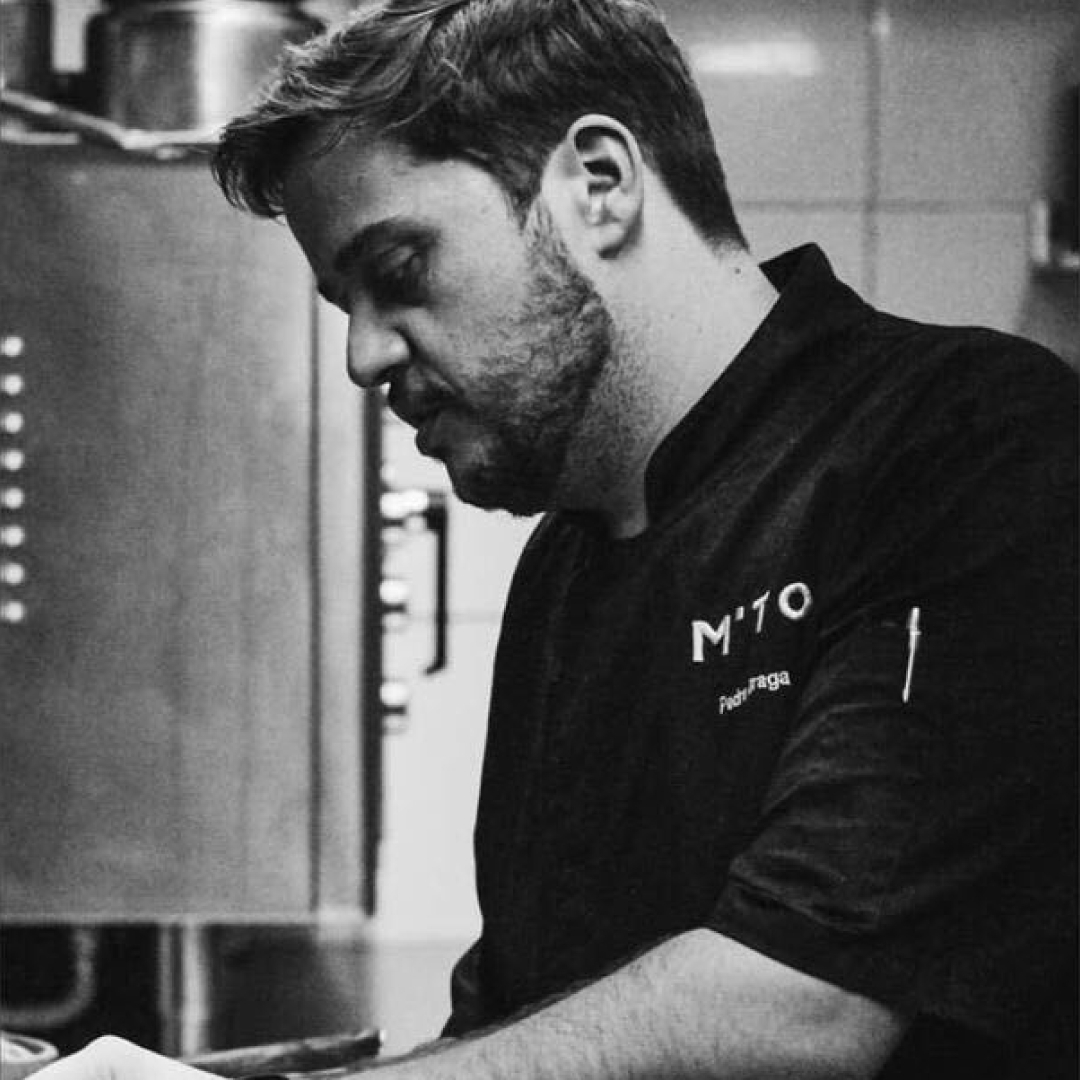
Pedro Lemos, Clérigos, Reitoria, Tenra e depois Mito, o seu primeiro restaurante de chef. Como surgiu a cozinha no seu caminho?
A cozinha sempre teve presente na minha vida. Desde pequeno ajudava em casa e adorava ajudar a minha mãe na cozinha. Mais tarde quando começam as jantaradas de amigos quase sempre era eu a cozinhar. Por volta dos 16 anos tive uma experiencia meia por brincadeira de trabalhar num café/restaurante de um Tio e ficou a alegria do contacto com os clientes. Mais tarde voltei a fazer uns serviço aos fins de semana para ganhar um trocos extras e acabei por tirar o curso de Gestão Hoteleira. A cozinha surge mais tarde depois dos estágios que fiz durante o curso onde entendi que a energia da cozinha me motivava, sendo eu algo preguiçoso (risos).
Já depois de começar a trabalhar decidi deixar o que estava a fazer e ir trabalhar com um Chefe meu conhecido nos seus restaurantes, fazendo a vida ao lado dele desde cozinhar a ir às compras bem cedo a eventos. Depois de dois anos em cozinha decidi que era isto que queria fazer e fui para Londres onde tirei o Curso de Cozinha e Pastelaria na Le Cordon Bleu.
Londres é uma cidade cativante do ponto de vista gastronómica e aproveitei para visitar alguns restaurantes como cliente e candidatava-me à cozinha e fazia 1 ou 2 dias de “trial” nas cozinhas desses mesmos restaurantes para puder ver como era por dentro. Quando acabo o Curso fico por lá a trabalhar com o Chefe Pierre Koffmann no seu restaurante homónimo. Entretanto volto a Portugal e engato neste caminho que já conhecem.
Alguns definem a sua cozinha como “fine dining sem luxos”. Sabemos que o conceito de fine dining tem mudado ao longo dos tempos. Na sua opinião, o que é um Fine Dining Restaurant?
Fine Dining na minha opinião não se trata nem só de comida nem só de luxos. Fine Dining exige rigor, técnica e consistência na cozinha e na sala. Mas é bastante abrangente, pode ser luxuoso ou mais casual, a mim não me choca qualquer uma das vertentes. No Mito quis uma abordagem mais ligeira. Fazemos os caldos como fazíamos no Pedro Lemos ou em Londres. E embora eu goste de frequentar Fine Dining queria algo mais relaxado na atitude, o serviço é mais descontraído mas eu insisto muito em que seja “custumer driven” sempre. No entanto o trato a postura é mais relaxada/próxima. Na cozinha igual, às vezes um empratamento não sai igual mas não me preocupa se estiver como se quer que esteja de confecção ou na qualidade do produto.
A carta original do Mito divide-se simplesmente em “frios”, “quentes”, “carvão” e “doces”. Como surgiu esta ideia?
Inicialmente a carta ia ser corrida, tudo seguido sem diferenciação do doce ou salgado. Acho que isso num registo de partilha pode ser giro, aliás não é ideia minha isto faz-se. Mas como queria marcar a presença da carvão em pratos que não era apenas grelhados achei que era engraçado fazer esta divisão. O nomes em si foram literalmente a divisão das secções da cozinha.
A forma mais visível de adaptação dos restaurantes à pandemia pauta-se por alterações no cardápio. Como é que o Mito adaptou o seu maravilhoso cardápio a estes tempos desafiantes?
Após o primeiro confinamento decidi colocar o Mito na Uber Eats. De Junho a Novembro deu para entender que não era restaurante target deste tipo de venda. Aliás pensava em mim, também encomendo comida para casa, olhava para a minha carta e achava que também não era algo que eu encomendasse com frequência. Pontualmente até seria capaz, mas mesmo assim não todos os pratos.
Quando chegamos a fim de Outubro e início de Novembro voltamos a sentir uma quebra grande na vinda de clientes. Mesmo assim a Uber não vendeu mais. Era mesmo residual. Com o encerramento dos fins de semana e um eventual confinamento entendi que tinha de reagir, não podia ir novamente para casa.
Abril foi muito certamente o mês mais difícil de estar dentro da minha cabeça! Não queria mesmo voltar a estar na mesma situação. A minha reacção foi literalmente pausar o projecto como ele era, e passar a um produto que eu próprio pediria em casa, um produto que me fosse mais rápido de repor dia após dia para trabalhar com stocks o mais baixos possíveis de modo a ser mais rápido e menos dispendioso de encher os frigoríficos. E a um preço de venda mais baixo porque sabia que não somos os únicos em dificuldades. Daqui surgiu o projecto #pausemitoplayburger.
Viramos no dia 12 de Novembro hamburgaria. Mas como queríamos manter a identidade Mito alargamos um bocadinho mais, não temos só hamburgeres de vaca, fazemos um fried chicken, temos um hamburger de salmão picado cá obviamente e um vegetariano. Para ter a certeza que era nosso até o pão fazemos cá. Mantivemos duas entradas icónes da nossa carta (croquetes de boi com mayo de chouriço e as bolas de Berlim de presunto pata negra e bacon) assim como o Sticky Toffee Puding na sobremesa. Para manter ali uns elementos clássicos da casa e porque se enquadram também nesta vertente mais gulosa/fast food.
Num setor tão competitivo como a restauração, quais são, na sua opinião, os segredos para garantir a fidelidade do cliente?
Proximidade, contacto e compromisso. Nós temos muitos clientes com quem temos contacto mesmo próximo. Saber a mesa que eles gostam, o que bebem ou o que poderão quer comer. É mesmo interessante este desafio e esta proactividade. Fazer com que a pessoa se sinta bem vinda é este um dos nossos maiores objectivos sempre. Já introduzimos bebidas na carta por causa de um cliente, ou fazermos algo que não temos porque um dia falamos nisso e numa outra visita surpreendemos com esse mesmo prato. Isto também torna este contacto divertido. Mas claro isto é com o tempo, há sempre a primeira vez que um cliente entra, e aí o que ganha é o sorriso, parece cliché, mas não é! Sorriso e disponibilidade para o receber.
Se não seguisse este caminho, de que outra maneira acabaria a usar a sua criatividade?
Estou ligado à hotelaria há muitos anos, não sei se sei responder a isto, mas desde que haja contacto com cliente, eu estou lá! Sou muito operacional, se tivesse de estar o dia todo sentado numa secretaria não haveria criatividade nenhuma isso eu posso garantir!! Tenho muito prazer em montar eventos em sítios que não são de eventos, mesmo que não cozinhe, isso conta?
Conta, sim! Há algum chef que admire muito? Quem e porquê?
Também é muito difícil responder a isso, porque não há só um nitidamente! Mas eu gosto sempre de responder Pierre Koffmann. Deu-me muito gozo trabalhar na cozinha dele. Ser ignorado alguns tempos e depois ficar sozinho na cozinha de tarde com ele a fazer terrinas, massas folhadas, brioches, baba’s… foi incrível, e ele é um ícone na gastronomia inglesa.
Nesta nossa fase há nomes que vão marcar muito o futuro da nossa cozinha, Vasco Coelho dos Santos, Aurora Goy e Nuno Castro. Estou a tentar não dizer muitos nomes e ficar pelo Porto Senão não acabava com esta lista.
O que o faz mais feliz no seu trabalho?
Sala cheia, sorrisos, copos a brindar, ver os clientes a dar garfadas e os olhos a brilhar, enquanto abanam a cabeça ao som da banda sonora que a minha mulher prepara para o Mito. Chegar ao fim da noite com a minha equipa, cansados, sorridentes e beber um fino. Mas isto pode ser saudade dos tempos antes do Covid (risos).
- A refeição portuguesa que mais facilmente impressiona alguém?
Arroz de pato. - O único ingrediente sem o qual não consegue viver e porquê?
Manteiga? - A coisa mais exótica/estranha que já comeu?
Não sei se é exótico mas definitivamente mais estranha foi um pulmão de vaca que é seco e frito na região de Padang na Indonésia. - Café ou chá?
Café. - Vinho ou cerveja?
Vinho mas não dispenso uma boa cerveja! - O país que mais o surpreendeu em termos gastronómicos.
Vietnam! A frescura dos produto a exuberância das ervas, e eu que adoro coentros fui muito feliz lá!
